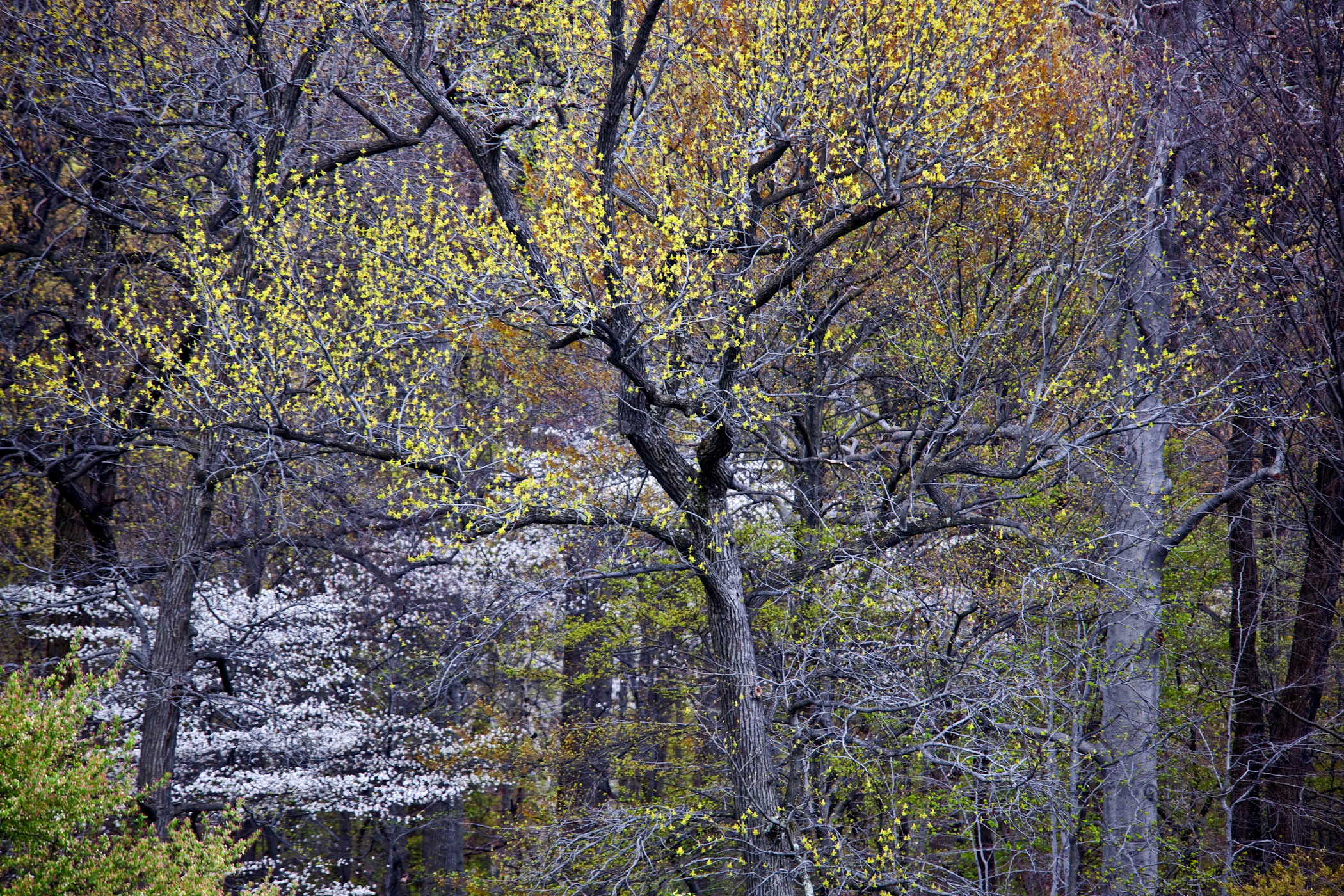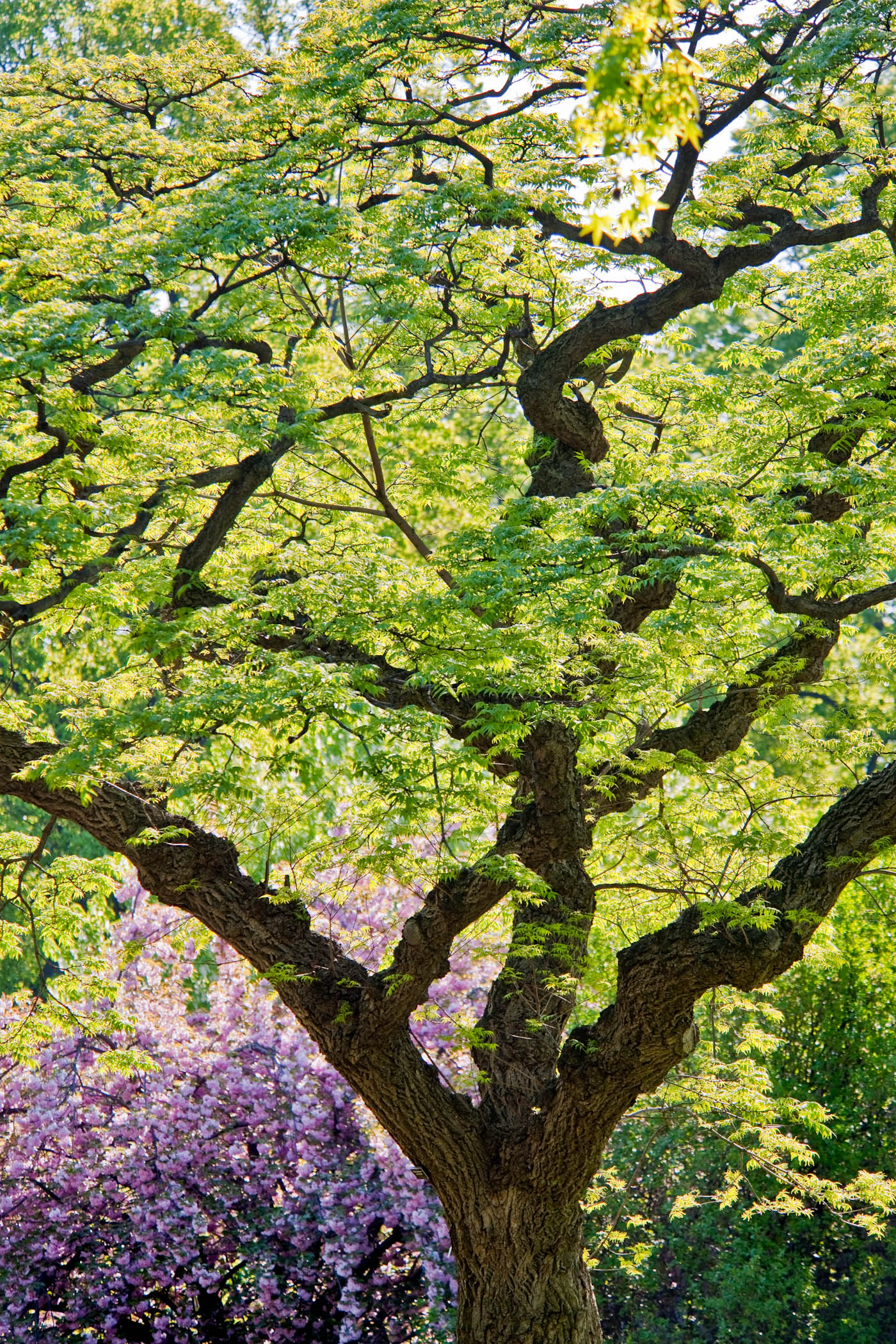Q&A With Larry Lederman, Tree Photographer
Posted in Photography on May 24 2011, by Ann Rafalko
Ed. note: Larry Lederman, photographer and friend of the Garden (he’s a member of our Advisory Board), has a beautiful exhibit of large-scale tree photographs up right now in the lobby of the amazing Four Seasons restaurant in Manhattan. We wanted to learn more about Larry and his amazing photographs, so we asked him a few questions.
What is the title of the Exhibit at the Four Seasons?
Spring.
How did you choose the photographs for the Exhibit?
To show the presence of trees in our lives. As you walk in the door of the Four Seasons you will first see the pleached Sycamores. It is a striking image: the Sycamores are just beginning to bud, and their severely pruned geometric structure is almost like an x-ray. There is no escaping “the hand of man” expressing a formal sense of beauty on ordinarily unruly Sycamores.
 Alongside the Sycamores are the Cherry Trees of Pilgrim Hill in Central Park, showering cherry blossoms like snow. There is no constraint here, no geometry. These trees are over a hundred years old, placed on a hill by Olmsted’s plan to be seen and enjoyed. They express their longevity and the wonder of renewal. And directly opposite the photograph of the Cherry Trees is the photograph of the view of the Native Forest in The New York Botanical Garden, expressing the exuberance of spring.
Alongside the Sycamores are the Cherry Trees of Pilgrim Hill in Central Park, showering cherry blossoms like snow. There is no constraint here, no geometry. These trees are over a hundred years old, placed on a hill by Olmsted’s plan to be seen and enjoyed. They express their longevity and the wonder of renewal. And directly opposite the photograph of the Cherry Trees is the photograph of the view of the Native Forest in The New York Botanical Garden, expressing the exuberance of spring.
The fifty-acre Forest is kept native through careful attention–as authentic as Colonial Williamsburg and as diligently cared for–to transport us to an earlier time, our American Eden. The other two images also show us spring’s joy in cultivated trees planted for pleasure. Trees reflect our culture, our communion with nature, without having to retreat to wilderness.
How did you get into taking photographs?
I was interested in and enjoyed trees. It was that interest the got me into photography; the subject preceded the medium. But once I learned how to use the camera, I expanded my subjects. For example, I have spent the last five years doing landscapes evocative of the Hudson River School of painters, among other things. Last year I had a show at Olana, the home and studio of Frederic Edwin Church, one of the founders of the Hudson River School.
When did you start and how did you learn?
I started about nine years ago with film and then moved to digital photography. I largely taught myself, which is the way I like to learn. But teaching yourself requires a lot of reading and many museum visits. It also allows you make a lot of mistakes and to develop bad habits, which you have to watch out for and correct. I find that it is necessary to take a few courses from time to time.
 How did you come to exhibit at the Four Seasons?
How did you come to exhibit at the Four Seasons?
They had seen the calendars that I have been doing for the Garden over the past five years.
Your photographs are very large, some are 6×9 feet!
Images of trees and forests show very well when they are large. Photographs help you to see structure and form in a way that is difficult to see otherwise. When they are large there is an emotional impact that informs your sense of the divine. It is the way that I see the images when I take them. For me, photography is an emotional experience.
How often do you photograph?
Almost every day, even when it rains and snows. And I am at the Garden at least two or three times a week, following the changes in the light and the seasons.
I understand that you are working on a book with the Garden?
We are doing a book to be called Magnificent Trees of The New York Botanical Garden. We expect that it will be published in 2012, in time for Christmas.
I also understand that the proceeds from the sales of the photographs at the Four Seasons will go to the Garden.
That is correct. The Garden has been an inspiration for me.
When will the exhibit at the Four Seasons begin?
It is up now through at least June 20, possibly through the end of June. It is in the lobby, which is a landmarked room, and you can visit the exhibit without going upstairs to the restaurant.

